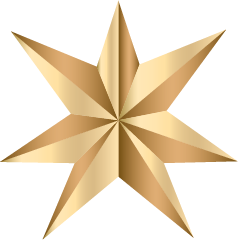Warm single from 2015: Sollissime in Copenhagen
Pouring the first glasses of Sollissime. Always a very big moment for us at Tange-Gérard to present and to share somg words and a lot of bubbles.
We just had the great pleasure to share our new Chardonnay champagne from 2015 with a great crowd in Copenhagen. We’ve named it Sollissime.
2015 is a very interesting year as it is the first vintage of ours that is part of a new trend of warm years in Champagne.
It joins what is now a trio of single plot champagnes: a cold year (2013), an inbetween year of both warm and cold weather (2014) and now a warm year (2015).
Here are some of our reflections on climate changes in Champagne.
Champagne - result of climate cooling
Once upon a time the wine from Champagne was neither sparkling nor known as champagne.
Winegrowers in the area of Aÿ and else where made a still wine that was popular in Paris and abroad and easy to ship via nearby river Marne.
Then something happened.
One point we shared is how climate change before and now has shaped and is shaping champagnes and the vineyards in Champagne (branches from the Sollissime plot upfront).
What is known as “the little ice age” occurred around the 1300s and continued until late 1800s.
The climate became colder, temperatures fell. Also in the region of Champagne.
In this the most northern of the French wineregions, the temperatures used to fit growing grapes for red wine. Now they were close to the limit of where vines could be grown at all.
From around the mid 1600s, the winemakers of Champagne faced a new problem: their former still wines had become slightly sparkling during their fermentation in the barrels.
This new feature was not popular with customers. Nobody knew what caused the anomaly.
The new wine was named champagne
Only later the proces was understood. Cold winters meant cold temperatures, also around the fermentation barrels.
However yeast only works within a certain range of temperatures. The winter arrived too early for the fermentation to be complete. Then as temperatures rose in the spring, the yeast became active again, and this worked as a sort of second fermentation. Caused by the cooling of the climate basically.
Even the sparkle was very moderate compared to the 6 bar of a bottle of champagne today, the bubbly sensation was not appreciated straight away.
But fashion changed. From the 1700s, the people en vogue in Paris and soon royalty enjoyed the new wine that was named after its region: Champagne.
And ever since everything has been done to help champagne become even better, even more elegant.
Sollissime is a blanc de blancs champagne made with Chardonnays from old vineyards (planted in the 1960s) in two lieu-dits in our village of Soulieres. Only 3.000 bottles have been made, the first 1.000 bottles is dosed with 5 g of sugar pr liter. The rest is left to age more in the cave.
Thus a classical champagne was defined as a sparkling blend of different grape varieties, communes and years to achieve the same taste each year.
It’s more than 300 years ago.
Now we’re at the doorstep of new climate changes and challenges too.
Climate warming and new types of champagnes
The rising average temperatures are a fact. In Champagne, this has been measured for several decades already and the change is easy to spot: Warmer average temperatures, earlier grape harvests, milder winters and so on. But also the possibility of more mature grapes.
This is why we at Tange-Gérard also benefit from the change.
We can grow better grapes and this makes it easier for us to create champagnes that are not blended and has a unique taste. Which is the only way a domaine of our small size and set-up can create our own champagnes.
The challenge is also a feature of the new times of a new not yet very known climate of seasons, different than before.
Each year we learn by doing.
How to grow and cultivate under warm temperatures. How acidity is no longer your “birth right” in Champagne but still one of the defining qualities of a champagne. Now acidity is something we achieve through extra hours working on shallow ploughing, vegetal covers of different cultures and - believe me - more is sure to come. Another possible change and challenge.
February 26th 2020 in Nordre Toldbod, Copenhagen, was mainly about the proud presentation of the result of change and challenge.
Enjoying and sharing good times.
Champagne is all you want to make your very special day more memorable.
We believe it’s even more important to sprinkle some magic dust on your everyday. Champagne does that wonderfully. Just try it ;-)




